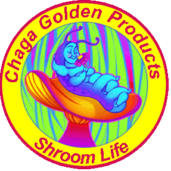Wild Chaga History
Wild Chaga History: From Ancient Discoveries to Modern Health Trends
Introduction
Wild Chaga, scientifically known as Inonotus obliquus, is a fungus with a rich history rooted in traditional medicine and folklore. Chaga’s use by various cultures for its purported health benefits is well documented. This article explores the historical journey of Wild Chaga, from its initial discovery to its widespread use in modern times for its potential health-promoting properties.
Ancient Discoveries and Early Use of Wild Chaga
 The discovery of Chaga dates back centuries, with its roots embedded in the forests of Siberia, Russia, and other northern European regions. The indigenous peoples of these areas, including the Khanty and Mansi tribes, were among the first to observe and utilize Wild Chaga for its medicinal properties.
The discovery of Chaga dates back centuries, with its roots embedded in the forests of Siberia, Russia, and other northern European regions. The indigenous peoples of these areas, including the Khanty and Mansi tribes, were among the first to observe and utilize Wild Chaga for its medicinal properties.
Chaga predominantly grows on birch trees in cold climates, forming distinctive black masses on the bark. The indigenous people discovered its existence while foraging in the forests and soon recognized its value in traditional medicine. The earliest recorded use of Wild Chaga can be traced to the 16th century when Siberian tribes employed it to make a healing tea.
Traditional Uses of Wild Chaga
Wild Chaga found its place in traditional medicine as a remedy for various ailments. Siberian and Russian healers used Chaga to address gastrointestinal problems, skin conditions, and respiratory infections. Usually prepared as a decoction or infusion, the methods varied among different cultures.
The Khanty people, for example, brewed Wild Chaga tea by boiling the fungus in water, creating a beverage with a dark, earthy flavor. This tea may provide energy, boost the immune system, and promote well-being.
Early Recognition of Health Benefits
The realization that Chaga possessed unique health benefits emerged through centuries of empirical observation. Indigenous cultures, with a profound connection to the natural world, developed an understanding of the medicinal properties of various plants and fungi, including Chaga.
Tales of Chaga’s remarkable healing properties spread as explorers and traders traversed the Siberian wilderness. However, in the 19th century, Chaga gained wider recognition beyond the indigenous communities.
Russian Influence and Exploration
 In the 19th century, the Russian nobility, including Tsar Nicholas II, became interested in the potential health Benefits of Chaga. Russian explorers and scientists conducted studies to explore its properties, and Wild Chaga gained a reputation as a tonic for vitality and longevity.
In the 19th century, the Russian nobility, including Tsar Nicholas II, became interested in the potential health Benefits of Chaga. Russian explorers and scientists conducted studies to explore its properties, and Wild Chaga gained a reputation as a tonic for vitality and longevity.
During this time, Wild Chaga drew attention to its use in traditional medicine and its potential in broader scientific and medical contexts. The Siberian physician and botanist Alexander Solzhenitsyn documented the conventional uses of Wild Chaga in his book “Cancer Ward,” sparking further interest in its potential anti-cancer properties.
Modern Scientific Exploration
The late 20th century saw an upsurge in scientific interest in Chaga, with researchers investigating its chemical composition and potential health benefits. The search for other complementary therapies for various health conditions partly influenced this renewed attention.
 Studies identified essential bioactive compounds in Wild Chaga, including polysaccharides, triterpenes, and phenolic compounds. These components possess antioxidant, anti-inflammatory, and immune-modulating properties. Researchers began to explore Chaga’s potential role in preventing and treating various diseases, including cancer and inflammatory conditions.
Studies identified essential bioactive compounds in Wild Chaga, including polysaccharides, triterpenes, and phenolic compounds. These components possess antioxidant, anti-inflammatory, and immune-modulating properties. Researchers began to explore Chaga’s potential role in preventing and treating various diseases, including cancer and inflammatory conditions.
Widespread Recognition and Commercialization
As scientific evidence supporting Wild Chaga’s health benefits grew, the fungus gained popularity in the wellness and alternative
medicine communities. Soon Chaga Supplement, in the form of Chaga Extract, and tea became widely available, appealing to those seeking natural remedies and preventive health measures.
 In the 21st century, Wild Chaga’s use expanded globally. Its popularity surged in North America, Europe, and Asia, with health-conscious consumers incorporating it into their daily routines. The Internet played a significant role in disseminating information about Chaga’s benefits, contributing to its rise as more than just a trendy superfood.
In the 21st century, Wild Chaga’s use expanded globally. Its popularity surged in North America, Europe, and Asia, with health-conscious consumers incorporating it into their daily routines. The Internet played a significant role in disseminating information about Chaga’s benefits, contributing to its rise as more than just a trendy superfood.
Health Benefits and Active Compounds
Contemporary Use and Challenges
 The health benefits attributed to Chaga are primarily associated with its rich composition of bioactive compounds. These compounds include:
The health benefits attributed to Chaga are primarily associated with its rich composition of bioactive compounds. These compounds include:
- Polysaccharides (Beta-Glucans): Well known for their immune-modulating effects. Beta-glucans stimulate and regulate the immune system, enhancing the defense against infections and diseases.
- Triterpenes: Chaga is abundant in triterpenes, such as betulinic acid, known for its anti-inflammatory and anti-cancer properties. Triterpenes contribute to Wild Chaga’s potential in managing inflammatory conditions and preventing the growth of cancer cells
- Phenolic Compounds: Chaga contains various phenolic compounds, including flavonoids and polyphenols, which exhibit antioxidant properties. Antioxidants can neutralize free radicals, reducing oxidative stress and protecting cells from damage.
- Melanin: Present in the outer crust and inner mass, contributes to Chaga’s antioxidant capabilities. It may play a significant role in protecting the skin from UV radiation and oxidative stress.
 Today, health-conscious people consume Chaga in various forms, such as tea, Chaga Extract, and capsules, and apply it topographically with Chaga Cream (lotion), Balm and Soap. Its proponents advocate for its potential to bolster the immune system, minimize inflammation, and aid overall well-being. However, it’s crucial to note that while Wild Chaga shows promise, the scientific understanding of its benefits is still evolving.
Today, health-conscious people consume Chaga in various forms, such as tea, Chaga Extract, and capsules, and apply it topographically with Chaga Cream (lotion), Balm and Soap. Its proponents advocate for its potential to bolster the immune system, minimize inflammation, and aid overall well-being. However, it’s crucial to note that while Wild Chaga shows promise, the scientific understanding of its benefits is still evolving.
As with any herbal remedy, the widespread use of Chaga presents challenges. Quality control, proper harvesting practices, and variability in Wild Chaga’s chemical composition pose challenges for standardization and consistency in product formulations. Additionally, individual responses to Wild Chaga can vary, and its safety during pregnancy, lactation, or in individuals with certain health conditions is not fully understood.
Conclusion
The history of Wild Chaga is a fascinating journey, spanning centuries, from its earliest beginnings as a traditional remedy used by indigenous peoples to its current status as a global health trend. The discovery of Wild Chaga and its recognition for its potential health benefits highlight the intricate relationship between traditional knowledge, scientific exploration, and contemporary wellness practices.
While Wild Chaga’s journey has brought it from the Siberian forests to global markets, it’s essential to approach its use with a balanced perspective. Scientific research continues to delve into the complexities of Wild Chaga’s bioactive compounds and their potential health effects.
Though lengthy and technical, the following article gives high credit to the Chaga Mushroom in the beginning and ending parts of the piece. It’s a deep dive into COVID-19 and natural substances that show effective treatments against the virus.
As interest in natural remedies persists, Wild Chaga symbolizes the connection between nature and human health, inviting exploration and discovery in traditional wisdom and modern science.
Chaga Golden Products
Our products are of the highest quality, derived from well-matured Wild Chaga, harvested from the most pristine high northern latitudes in a sustainable and caring way. Experience ALL the potential benefits of Wild Chaga that health-conscious people are discussing today. We offer one of the finest Wild Chaga Extracts on the market, made with a proprietary dual extraction process that is slow and meticulous to put the Very Best in every product we make. See All our products from Chaga Extract to Balm, Lotion and Soap.
